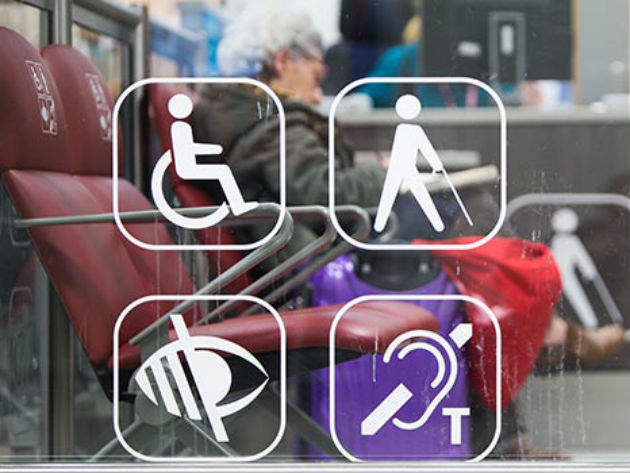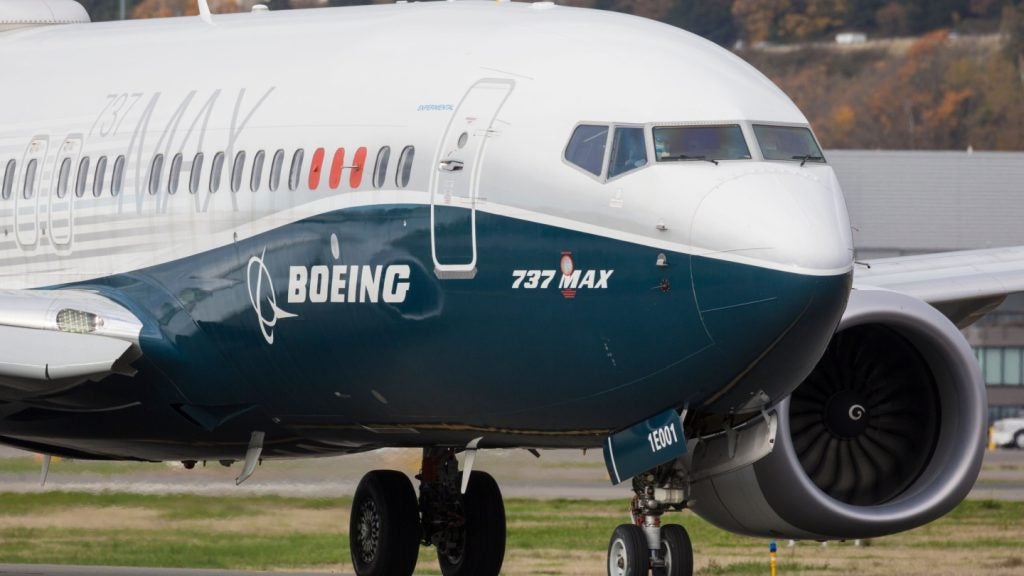
Of the total UK population of 64 million people, on average half fly at least once each year. At the same time, 11 million people currently live with some form of disability. Judging by these statistics, it should be expected that 5.8 million disabled people fly each year.
But in reality, only 2 million disabled passengers are estimated to fly every year. According to airport service provider OCS, the company provides assistance to 1.5 million of those passengers across the 10 UK airports they serve.
For their latest “Challenging for Change” report, OCS asked some of those passengers what more can be done to ensure a better, smoother journey for them, but also to encourage more people with special needs to venture on a trip abroad.
Steven Wheeler, who has worked with OCS for the past 25 years, shares some insight into how air travel has changed for people with reduced mobility, and explains some of the barriers that still exist.
Eva Grey: How did the idea behind the “Challenging for Change” report come about?
Steven Wheeler: OCS has provided these services for 25 years in the UK, and we’d say we provide a good service. But we wanted to know how we can get from good to great. So we thought we’d ask the users.
I’ve known the report’s author Kay Allen OBE for a number of years. She used her resources, went out in the community and asked passengers how they felt about the services they received at airports in the UK, irrespective of where they fly to.
How well do you really know your competitors?
Access the most comprehensive Company Profiles on the market, powered by GlobalData. Save hours of research. Gain competitive edge.

Thank you!
Your download email will arrive shortly
Not ready to buy yet? Download a free sample
We are confident about the unique quality of our Company Profiles. However, we want you to make the most beneficial decision for your business, so we offer a free sample that you can download by submitting the below form
By GlobalDataWe thought we could use that to fine-tune our service to the end user. So that’s the rationale behind it.
EG: How well is the aviation industry doing in terms of accommodating passengers with reduced mobility?
SW: For many years, and currently outside of Europe, the responsibility of handling passengers with reduced mobility (PRM) still remains with the airlines. So there is often a conflict between those airlines that deliver a good service to people requiring it, and those airlines that don’t. Often, the airports bear the brunt of that.
The European Commission (EC) investigated disability rights in the early 2000s and saw that some airlines provided the service well, and some didn’t. That led to discrimination for disabled people. At the time, one person said that “if I book a vegetarian meal, everyone knows I need a vegetarian meal and I get it. If I book or require disabled assistance, I may get it, or I may not get it.”
For example in Canada, it’s not unusual to see companies fighting over a wheelchair, and only looking after their airline’s passengers. So if that airline’s passengers then transfer to another airline, which is served by another PRM provider, there is a gap in service.
The legislation changed in 2008, when the EC mandated that in Europe, the responsibility to provide services to disabled passengers should lie with the airport. So in a sense, airports are now responsible for all their passengers, irrespective of the airline they book with.
EG: Has the situation improved since then?
SW: Most definitely. Back in 2008, we provided services to 0.5% of passengers going to an airport. That was the percentage of people who notified the airport that they required assistance.
Since then, it’s increased every single year, and in 2016, that percentage is up to 2%. That is fantastic news.
Before the legislation, we had numerous examples of elderly people and people with disabilities not wishing to travel because they were unsure of the service they would receive. But as this legislation and this consistency of service has taken hold, there’s more confidence within the disability, elderly and ageing population that actually, they can get good assistance throughout Europe.
In a sense, that’s the purple pound [i.e. the spending power of disabled people] – there’s more passengers, more revenue and more spend for both airlines and airports. So I think people are seeing that it is increasingly important to provide a good level of service to all people.
EG: How do airports in the UK score compared to other parts of the world?
SW: In the UK, we are probably far more advanced than any other region around the world, because the EC did mandate that every airport should be responsible to deliver a good level of service.
I’ve just come back from Canada, where I met a number of [representatives from] Canadian and US airports, and all of them agreed that there are varying levels of service at their airports.
We discussed our report with a number of airports in North America so they are asking us to go back and help them improve their level of service, because they have the same situation we had 10, 15 years ago, where airlines contract out and some do it well and some do it poorly. They recognise something has to be done.
Over the last few years, we’ve been advising airports in the Middle and the Far East and all of them have the same problem: there’s no mandatory element from a commission or government to say airports have got to pick up responsibility.
But even in the UK, there are a number of stakeholders.
In any airport, there is the airport authority, the individual airlines, the ground-handlers, and us, the PRM service provider. So generally speaking, when something goes wrong, you can identify the break in the communication chain and the supply chain between those stakeholders.
EG: What are some of the remaining barriers that airports still face when welcoming passengers with special needs?
SW: The barriers are improving the communication between the various stakeholders.
Each airport is different, so we bring the users at that airport and ask them what challenges they see there. They may say there’s an inability to get advice, or difficulty in getting from the bus to the airport, maybe there are issues with the check-in or security process.
What we intend to do is to keep reviewing this process every six months to a year, and keep improving the experience for the passengers.
We worked with a number of groups, such as Alzheimer’s and dementia societies to devise a plan to assist those with “hidden disabilities”.
People with autism for example, particularly kids, don’t really want to go through the melee of a busy airport, because it can give young people stress. So we’ve identified that and we provided autism awareness training to various stakeholders. We held training programmes with the airport authority, security guards and customer service staff at airports and airlines. So if they serve a passenger with autism, they need to be mindful of their individual needs.
We also thought – and some airports agreed – that someone with autism who needs special assistance should receive a band that they can wear on their wrist, or a lanyard.
Increasingly, we are moving away from the traditional “somebody needs a wheelchair”. We are trying to educate airport staff so people can be assured that they can get the appropriate level of service to their needs.
EG: The report highlights that some passengers are not aware of their responsibility to notify the airline ahead of their departure. How big is this problem?
SW: The passenger must notify the airline at least 48 hours before they fly, and the airline must notify the airport 36 hours before they fly. The airline needs to make sure that they are given assistance at both ends, both the departure airport and upon arrival. Now, OCS as a provider has direct links with the airlines and we get that information automatically.
Even today, only about two thirds of passengers that do need assistance notify their airline. Which means on the day, a third of passengers just turn up, either at the door of the airport or on board of an aircraft, requiring assistance.
In a practical sense, this is where the service does go wrong: people have an expectation that the service will always be there. But if you think about it in terms of volume, at Gatwick for example, on a busy day we can have between 2,000 to 3,000 passengers requiring assistance. If out of those 1,000 just turn up, it does take time.
What we try to do year on year is go out to disability groups and publicise the need to advise the airline at the time of booking your flight.
EG: What’s the next step for OCS after the publication of the report?
SW: The report is called “Challenging for Change” – we want to challenge everybody, all the stakeholders.
We are now holding workshops, bringing in the disability groups and users, airport authorities, airlines and ground handlers and ask what we can do at their airport to improve the process for people with special needs.





